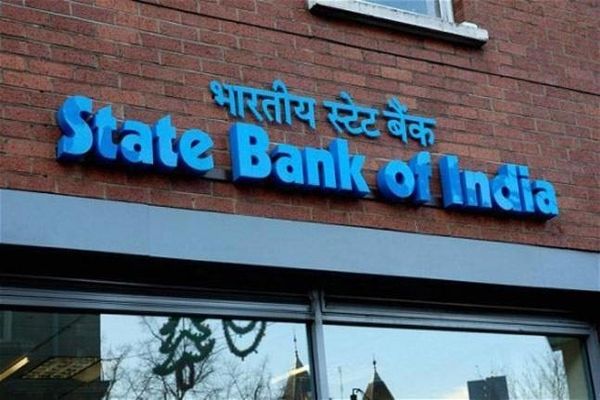Post office provides you one of the safest options to invest your money and get a stable returns without taking any risk. Kisan Vikas Patra is one such scheme for investors who want guaranteed returns. Post office’s Kisan Vikas Patra, this scheme doubles your invested capital in 124 months. So, if you start perking your hard earned money, it will be doubled in 10 years and 4 months.
Post Office Savings Scheme Kisan Vikas Patra Interest Rate, Other Details
Post Office Savings Scheme Kisan Vikas Patra provides you an interest rate of 6.9 per cent which is compounded annually. Under Kisan Vikas Patra scheme, the amount invested doubles in 10 years and 4 months or 124 months.
Who can invest in Post office scheme Kisan Vikas Patra?
- A single adult, a guardian on behalf of minor or on behalf of person of unsound mind, and a minor above 10 years in his own name.
- Up to 3 adults can open a joint account.
- Any number of accounts can be opened under the scheme.
- While there is no maximum deposit limit, one can start depositing a minimum of Rs 1000 and in multiple of Rs 100.
- Your deposit amount will be matured on the maturity period prescribed by the Ministry of Finance from time to time as applicable on the date of deposit.
- You can close your Kisan Vikas Patra account prematurely any time before maturity. However there are a few conditions for that. Kisan Vikas Patra can be closed prematurely on the death of a single account, or any or all the account holders in a joint account. If there is forfeiture by a pledgee being a Gazette officer. If hounourable court passed any order.
- One can also closes Kisan Vikas Patra account after 2 years and 6 months from the date of deposit.
- You can transfer your Kisan Vikas Patra from one person to another person. However, there are a few conditions for that.
- Kisan Vikas Patra account can be transferred on the death of account holder to nominee, on the death of account holder to joint holder(s), on order by the court, and on pledging of account to the specified authority.
Features and Benefits of Kisan Vikas Patra
Guaranteed returns
Regardless of the market fluctuations, you will get the sum guaranteed. As this scheme was originally intended for the farming community, the priority was to encourage them to save for rainy days.
Capital protection
It is a safe mode of investment and not subject to market risks. You will receive the investment and gains when the tenure ends.
Interest
The effective interest rate for Kisan Vikas patra varies depending on the number of years invested in KVP at the time of purchase. The current interest rate is 6.9% p.a. for the quarter starting from 1 January 2021 to 31 March 2021, compounded yearly. By compounding the interest, you will receive more returns on your deposit.
Tenure
The maturity period for Kisan Vikas Patra is 124 months and you can avail the corpus then. The maturity proceeds of KVP will continue to accrue interest till you withdraw the amount.
Taxation
It doesn’t come under the 80C deductions, and the returns are completely taxable. However, Tax Deducted at Source (TDS) is exempt from withdrawals after the maturity period.
Rules to premature withdrawal
Though the account matures after 124 months, the lock-in period is 30 months. Encashing the scheme early is not allowed, unless in the account holder’s demise or court order.
Ease & affordability
KVP is available in denominations of Rs. 1000, Rs. 5000, Rs. 10,000 and also Rs. 50,000 for investment. There is no maximum limit. Please note that denominations of Rs. 50,000 are available only at the head post office of a city.
Loan against KVP certificate
You can use your KVP certificate as collateral or security to avail secured loans. The interest rate is comparatively lesser for such loans.
Nomination facility
Collect a nomination form from the post office, and fill up the required information of the nominee. If you are nominating a minor, mention the date of birth.
KVP certificate issuance
If payment is done through cash, they issue the KVP Certificate on the spot. And for Cheque, Demand Draft or Money Order, you will have to wait till the amount is cleared to the post office.
KVP Identity Slip
This includes the Kisan Vikas Patra Certificate, the KVP serial number, the amount, the maturity date and the amount to be received on the date of maturity.
How KVP accrues interest & double the money – an example
KVP is a low-risk scheme. Below table shows the returns over the period for an investment of Rs 1000.
| Time | Amount Repaid (Rs) |
| 2.5 years but < 3 years | 1154 |
| 3 years but < 3.5 years | 1188 |
| 3.5 years but < 4 years | 1222 |
| 4 years but < 4.5 years | 1258 |
| 4.5 years but < 5 years | 1294 |
| 5 years but < 5.5 years | 1332 |
| 5.5 years but < 6 years | 1371 |
| 6 years but < 6.5 years | 1411 |
| 6.5 years but < 7 years | 1452 |
| 7 years but < 7.5 years | 1494 |
| 7.5 years but < 8 years | 1537 |
| 8 years but < 8.5 years | 1582 |
| 8.5 years < 9 years | 1628 |
| 9 years < 9.5 years | 1675 |
| 9.5 years < 10 years | 1724 |
| 10 years but before maturity | 1774 |
| On maturity of certificate | 2000 |
Investing in Kisan Vikas Patra is simple, as mentioned below.
Step 1: Collect the application form, Form A, and fill the form with the necessary information.
Step 2: Submit the duly filled form to the post office or bank.
Step 3: If the investment in KVP is through an agent, then the agent should fill Form A1. You can download these forms online.
Step 4: The Know Your Customer (KYC) process is mandatory and you need to submit the ID and address proof copy (PAN, Aadhaar, Voter’s ID, Driver’s License, or Passport).
Step 5: Once the documents are verified, you must make the deposit. The payment can be made by cash, locally executed cheque, pay order, demand draft drawn in the favour of the postmaster.
Step 6: You will get a KVP certificate immediately unless you make payment by cheque, pay order, or demand draft. Keep this safe as you will need to submit this at the time of maturity. You can also request them to send you the certificate by email.
In short, if Kisan Vikas Patra seems like a worthwhile investment that matches your financial goals, invest immediately. It is easy enough to open and manage. All you need to do is have the amount ready and pay one visit to the nearest post office.
Nomination
Single holders or joint holders of a certificate can make a nomination by filling up the details in Form C at the time of purchase. You can nominate any person so that the nominee will be entitled to the benefits of the certificate in the event of the death of the single holder or both the joint holders.
If the nomination is not made at the time of purchase, the single holder, joint holders, or the surviving joint holder can make a nomination at any time after the purchase of the certificate but before the maturity by submitting the duly filled Form C. Submit it to the postmaster or bank officer where the certificate is registered.
However, no nomination can be made if the certificate is applied for and held by or on behalf of a minor. If a nomination is made in this case by the holder or holders of the certificate will be cancelled or altered using Form D.
When you have more than one certificates registered on different dates, you have to make separate applications for the nomination, cancellation of the nomination, or variation of the nomination. Such an application will be effective from the date of its registration and will be noted on the certificate. Nominations made for the first time is free-of-cost. Subsequent nominations or cancellation will be charged at Rs.20 per application.













Very informative, dear updated you! PLEASE ALSO INFORM WHY IT IS CALLED “KISAN VIKAS” & how an investment in it goes towards farmer progress! Hoping it is linked with FARM LAWS recently passed and goes to help free and open markets, uncluttered by middle men !